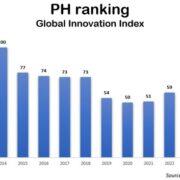The continued expansion of money being sent back home to the Philippines by overseas Filipino workers along with marked improvement of external demand are projected to fuel the domestic economy’s recovery for this year.
However, Fitch Solutions Country Risks and Industry Research reduced its growth projection for the Philippines in 2021 from the initial 7.6% to 5.8% as a result of the expected hit from the enhanced community quarantine (ECQ).
The ECQ status installed for Metro Manila, Bulacan, Cavite, Laguna, and Rizal from March 29 until April 4 and later extended for another week to April 11 was due to the surge of coronavirus disease 2019 (Covid-19) cases.
Adding to the unfavorable factor in the Philippines’ economic recovery is also the slow vaccination rollout.
In a report released last Monday, April 5, the unit of Fitch Group cited signs of gradual economic activity such as the above 50 level of the Manufacturing Purchasing Managers’ Index (PMI), which was unchanged at 52.5 last February against the previous month “indicating a gradual improvement in activity.”
As of last March, the PMI index stood at 52.2 based on the report of the IHS Markit.
An index of above 50 indicates expansion while a figure of below 50 shows otherwise.
“Indeed, respondents noted supportive demand dynamics and increased inventory building on a more positive outlook,” Fitch Solutions said.
The report also noted that external demand has been improving in part due to the Covid-19 vaccination program in other countries which enabled overseas Filipino remittances to remain resilient.
The report said while the January 2021 inflows declined by 1.7% year-on-year, it is 1.8% higher than the January 2019 pre-pandemic level.
“We believe that overall remittance flows will begin to gradually rebound as growth picks up globally, particularly on the back of a recovery in the US and the Middle East on the back of rising oil prices, which together accounted for 57.4 percent of remittances in 2019,” it said.
It added while lockdowns in Europe and tightening credit growth in China threaten the broader recovery in global demand as vaccination rollouts progress, “we expect growth to prove strong, boosting the outlook for exports which we forecast to grow 9.5 percent, following a 16.7 percent contraction in 2020.”
“As such, the external backdrop should continue to provide support to the economy in 2021,” it said.
However, the report said implementation of the two-week ECQ will slightly dampen growth prospects given the expected slide in domestic consumption and investment, factors that the domestic economy are highly vulnerable to.






